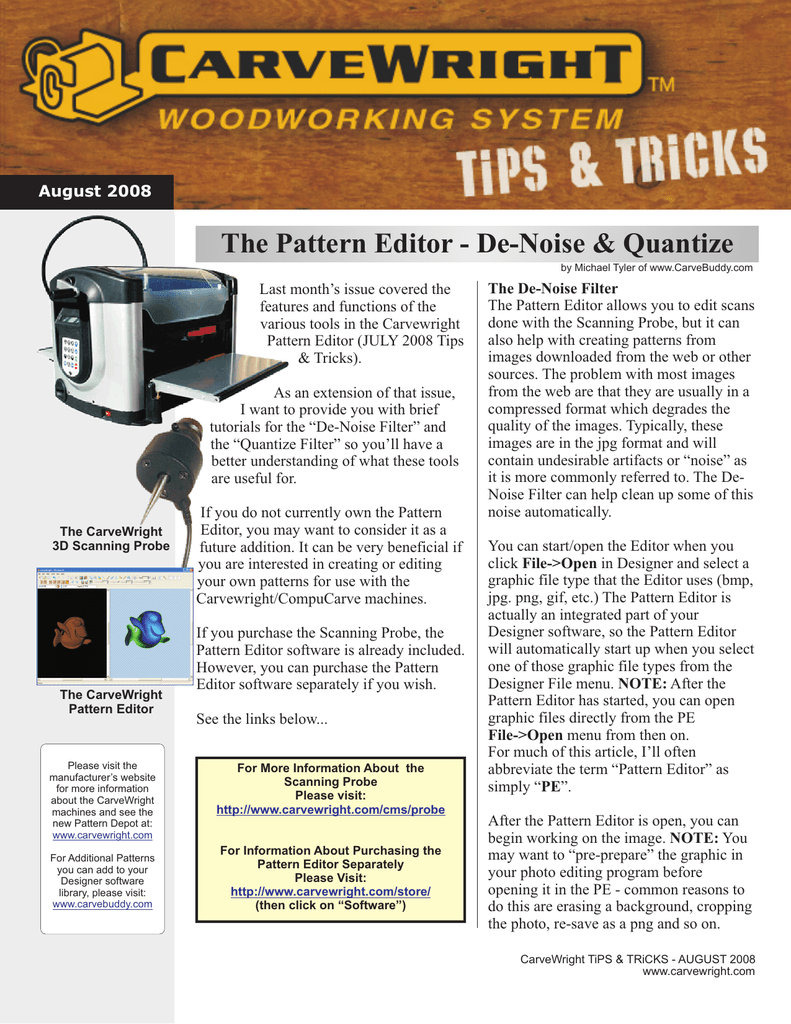

An undersized extension cord will cause a drop in line voltage, which can result in a momentary loss of power. Using a transformer to convert to 220V will void your warranty.Can I use an extension cord with the machine?When using the CarveWright at an extended distance from the wall outlet, use an extension cord heavy enough to carry the current that the tool will draw without inducing a large resistance load. Some customers are reporting using transformers to step up to 220V, but this generally means they are using the system outside of the US and their warranty is in this case voided.Is it possible to run the machine on 220V AC? The CarveWright can only be used with a 60 Hz 110V AC power supply. We encourage all of our customers to be creative with materials within the wood, plastic and foam familiies and to report successes and failures so that we can share this information with the entire CarveWright community. In fact, not that the CarveWright warranty is null and void if the machine is used to cut metals, stone or any other hard material not explicitly allowed. Other Materials Any materials outside of those stated above are not to be used in the machine. The denser the foam the better the surface finish. Sign foam, such as HDU (Hish Density Urethane), is particularly suited for creating signs and molds.

The “dust” and chips produced can damage drive components and belts. Also remember to clean the machine very thoroughly when using plastics. For example, do not use decorative bits or the cutout function on plastics. DO NOT use any machine function that employs a bit other than the tapered bit when using plastics. This means that some functions will not be available to you when using hard plastic. The only bit currently approved for plastic is the tapered 1/16″ carving bit. Deeper carving will put excessive load on the machine by trying to push a bit through this hard material and can cause damage to the bit and/or machine. Therefore it is very important to keep any carving in plastic to less than 1/8″ deep. Note that the machine is always expecting soft material like wood as the carving medium and will automatically set the speed and feed rates based on this expectation. The great thing about cast acrylic and Corian is that they come in many different colors and opacities. Most other plastics such as Nylon, ABS and extruded acrylic (Plexiglas) tend to melt and gum up because the melting point of the material is lower than the temperature generated at the bit tip when carving. Plastic Suitable carving plastics include polycarbonate (Lexan), cast acrylic (sign makers plastic), and acrylic base (Corian or Staron).
#Carvewright cutting bit software
The CarveWright Designer Software has several tools to control chip out to help when working across all types of wood grain. Also dry materials tend to produce a better quality finish then material with high moisture content. In most cases, feathering and chip out will increase as the grain size increases. We have found that hard materials with tight grains produce the best finishes. While we have not tested every conceivable hardwood, we have yet to find one that cannot be used in the CarveWright machine.
#Carvewright cutting bit full
Wood The machine can carve the full range of wood types from soft pine to exotic hardwoods. At present, the CarveWright does not carve in metal, ceramic tile, stone, glass or concrete. Any materials outside these families are not to be used with the machine unless explicitly state by CarveWright. The CarveWright can work in most soft materials including wood (even exotic hardwoods), suitable plastic and foam. The larger box (10″ x 13″ x 6″) took 5 hours at BEST quality mode. For comparison, the top of the small jewelry box (8.5″ x 5.5″ x 3.5″) on the Projects/The Results page of the website took one hour to carve in NORMAL quality mode. The software will estimate total cut time when you upload the project to the memory card. Vector carvings are typically much faster than raster carvings. The path is similar to that of a plotter. A Vector carving is produced when the bit follows a 3-D path generated by the software. The path is similar to that of a dot matrix printer. Raster carvings are produced by making many small passes with the 1/16″ carving bit, building the image one line at a time.


 0 kommentar(er)
0 kommentar(er)
